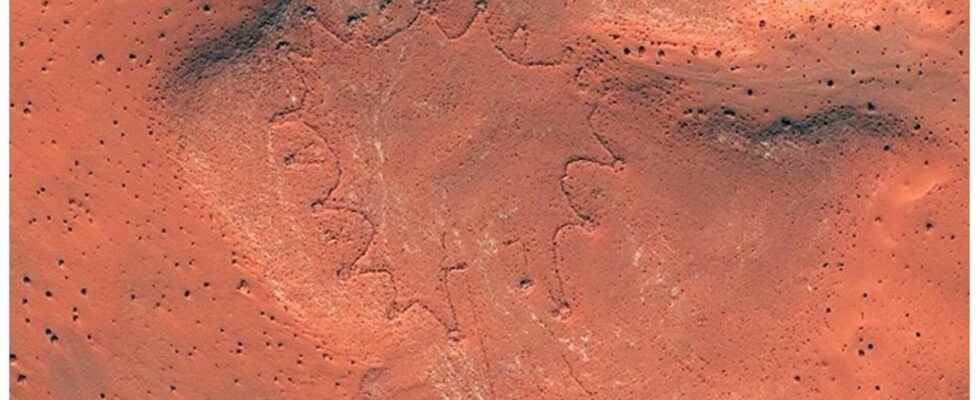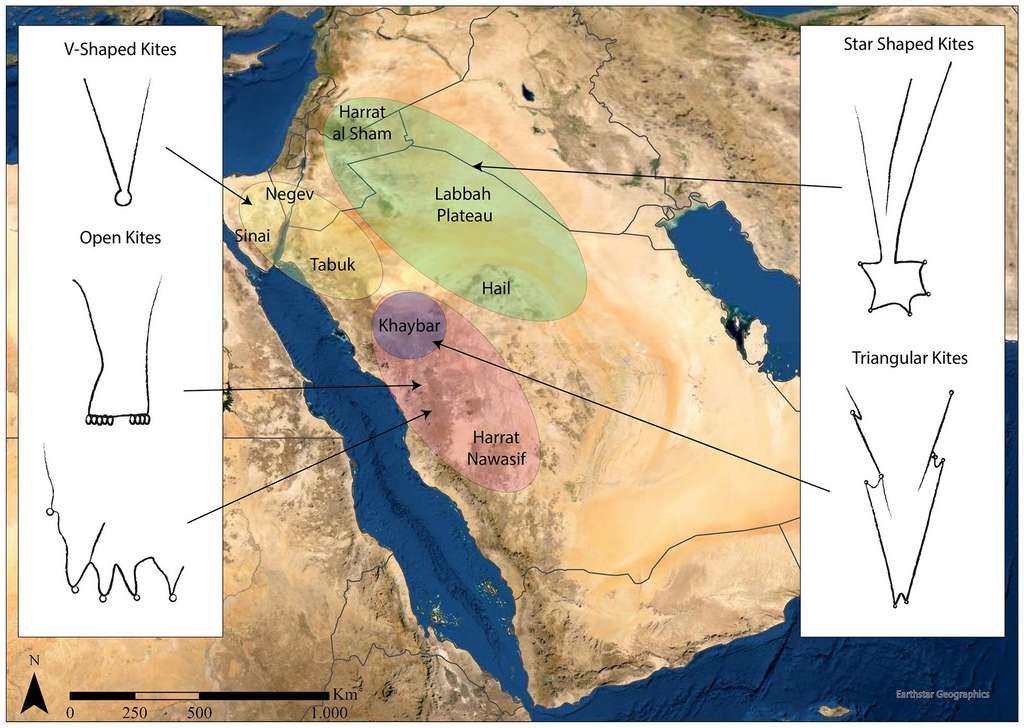Strange prehistoric hunting structures have been spotted through satellite imagery, in northern Saudi Arabia and southern Iraq. These structures nicknamed “kites” reveal meticulous hunting practices that date back 8,000 years!
You will also be interested
[EN VIDÉO] Do you know these myths about prehistory? Antoine Balzeau, paleontologist at the National Museum of Natural History, regularly tackles the exercise of popularization. Dissemination of knowledge to the general public. Author of the book “33 received ideas about prehistory”, he revealed some of them to Futura.
They can extend over several kilometres: the “kite” hunting structures date back nearly 8,000 years and demonstrate very elaborate hunting techniques. Used during the Neolithicthese facilities consist of low walls stone that form paths in which the prey were guided by humans in order to be trapped: they then found themselves in a central enclosure, the “head” of the kite, to be killed. Cells were also found hidden in the wallswhich could also serve as a trapping pit.
Already known for decades, more than 6,000 of these funnel traps have been found until today, but only in the countries of the Levant and in Arabia. Researchers have just found new ones thanks to satellite imagery, 400 kilometers further than the previous ones, which they detail in a study published in Holocene.
They provide valuable information about prehistoric peoples
By their large size, and their quality of elaboration, these structures represent the largest found dating from theHolocene ; they suggest a lot of coordination and a large number of people involved in the construction. They could also signify a certain social status: cave paintings of kite traps have been found in Jordan.
According to the study, their distribution would also indicate a climate change ancient which occurred about 6,000 years ago: “It is assumed that at a later part of theHolocenethe environment has changed and the plateau of Al Labbah has become uninhabitable”. Indeed, the kites would have been built during the humid phase of the Holocene, a period which lasted 4,000 years and which ended abruptly with feedbacks between the vegetation and theatmosphere.
Interested in what you just read?

